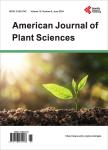Resilience of Bottomland Hardwood Stands Following Agricultural Use on the Santee Experimental Forest
Resilience of Bottomland Hardwood Stands Following Agricultural Use on the Santee Experimental Forest作者机构:Center for Forested Wetland Research Southern Research Station USDA Forest Service Cordesville USA Center for Forested Wetland Research Southern Research Station USDA Forest Service Cordesville USA.
出 版 物:《American Journal of Plant Sciences》 (美国植物学期刊(英文))
年 卷 期:2013年第4卷第3期
页 面:717-726页
学科分类:1002[医学-临床医学] 100214[医学-肿瘤学] 10[医学]
主 题:Bottomland Hardwoods Old-Field Succession Rice Cultivation Resilience Santee Experimental Forest
摘 要:Resilience is a key function that affects an ecosystem’s ability to recover from disturbance. Understanding the extent to which forest communities recover after a long period of disturbance without direct intervention is important to provide context for considering ecosystem response to disturbance regimes. Species composition and structure were recorded on bottomland hardwood stands that were once inland and freshwater tidal rice fields. We sampled 17 old-field sites and 7 reference sites across three geomorphic settings. The old-field sites ranged from 30 to 120 years since agricultural abandonment. A total of 89 species were found across the old field sites and reference sample areas. Of that total, trees comprised 33 species, shrubs—5 species, and vine/herbs/forbs—51 species. Using field data, combined with stand inventory records, aerial photography (1936-2010), and high-resolution LiDAR imagery, we chronicled the evolution of the forest since the cessation of agriculture. Our findings demonstrate how Pinus taeda seeded directly after the rice fields went to fallow;and this conversion of bottomland swamp to rice to pine was a direct result of water management embankments constructed across the landscape to aid in crop irrigation. The remnant water management features may still alter flooding patterns thereby affecting development of Taxodium distichum and Nyssa aquatica in the old-fields. These results suggest, that over the 100+ years forest stands on the Santee Experimental Forest have developed to represent bottomland hardwoods characteristic of the southeastern United States coastal plain.



